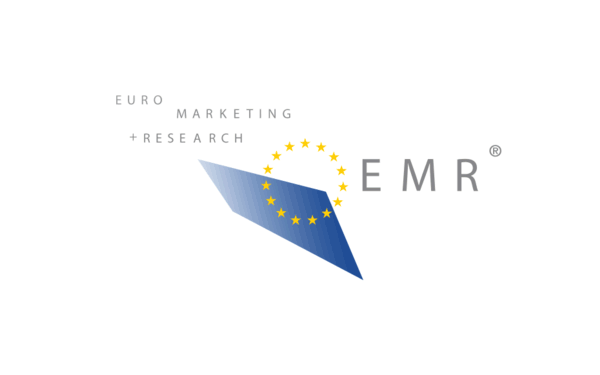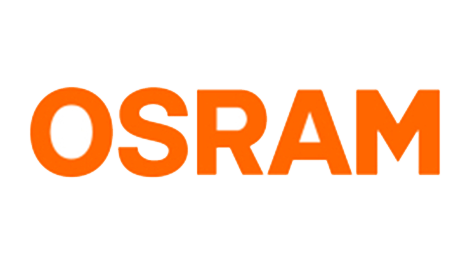ams OSRAM – ams OSRAM sells Entertainment & Industry Lamps business to Ushio Inc. for EUR 114 m as first divestment under its deleveraging plan
ams OSRAM sells Entertainment & Industry Lamps business to Ushio Inc. for EUR 114 m as first divestment under its deleveraging plan
- Sale of Entertainment and Industry Lamps business to Ushio Inc. (Japan), closing expected Q1/26
- Deal value EUR 114 m, approx. 500 employees will transition to Ushio Inc.
- First divestment under the deleveraging plan where proceeds well above EUR 500 m are targeted
Premstaetten, Austria, and Munich, Germany (29 July 2025) — ams OSRAM sells its Entertainment and Industry Lamps business to Ushio Inc. for EUR 114 m as first divestment under its deleveraging plan
“After the successful extension of the Revolving Credit Facility and the placement of additional senior notes, we deliver today the first result of our accelerated deleveraging plan in terms of executing divestment options. With Ushio, we have found the perfect new home for our sophisticated, high-end specialty lamps niche-business. At the same time, we are further streamlining our portfolio towards our core markets.” said Aldo Kamper, CEO of ams OSRAM.
Sale of Entertainment and Industry Lamps business
ams OSRAM has signed an agreement with Ushio Inc., a global leader in the field of optical technologies, headquartered in Tokyo, Japan, for the sale of its Entertainment and Industry Lamps (ENI) business. The transaction is expected to close until end of March 2026, subject to typical closing procedures. The purchase price of EUR 114 million is on a cash-and-debt-free basis. Net deal proceeds will be determined upon final closing accounts at date of closing.
ENI’s product portfolio ranges from specialty lamps for infrastructure and cinema applications to extremely sophisticated light sources for semiconductor wafer fabrication equipment (WFE). The profitable ENI business delivered revenues of approx. EUR 170 million in 2024.
Ushio Inc. has approx. 6,000 employees and provides light units, equipment, systems, and services through developing new light sources and developing and applying proprietary optical technology, serving a multitude of industrial segments.
Executing its balance sheet improvement plan
On 30 April 2025, ams OSRAM announced its accelerated, comprehensive plan to reach its target leverage ratio of net-debt / adj. EBITDA below 2 consisting of various, complementary elements. Amongst these are an improving free-cash-flow performance on the back of a seamless execution of its strategic efficiency program ‘Re-establish the Base’, structural growth in the core semiconductor business, the disposal of its 8-inch-Kulim facility thereby eliminating the sale & leaseback liability for this factory, as well as the consideration of strategic options for various additional assets (e.g. divestments) with the goal to generate proceeds well above EUR 500 million.
The sale of its ENI Business to Ushio Inc. is the first step in these considerations.
Sourceams OSRAM
EMR Analysis
More information on OSRAM Light AG: See the full profile on EMR Executive Services
More information on ams-OSRAM Group: See the full profile on EMR Executive Services
More information on Aldo Kamper (Chairman of the Management Board and Chief Executive Officer, ams-OSRAM + Chief Executive Officer, OSRAM Licht AG): See the full profile on EMR Executive Services
More information on Rainer Irle (Chief Financial Officer, ams-OSRAM): See the full profile on EMR Executive Services
More information on “Re-establish the Base” Program by ams-OSRAM Group: See the full profile on EMR Executive Services
More information on Entertainment & Industry Lamps Business (ENI) by ams-OSRAM Group: https://ams-osram.com/products/lamps/lamps-for-entertainment-and-industry-applications + ENI’s product portfolio ranges from specialty lamps for infrastructure and cinema applications to extremely sophisticated light sources for semiconductor wafer fabrication equipment (WFE). The profitable ENI business delivered revenues of approx. EUR 170 million in 2024.
More information on Ushio Inc.: https://www.ushio.co.jp/en/ + The “Light Innovation” company. Ushio contributes to the prosperity of society and life through “Light Innovation.
The Ushio Group has established groups of highly qualified professionals with the required expertise in various countries and regions throughout the world as it pursues the development and provision of light products and services of paramount quality. The Group is wholly committed to its work as a group engaged in the creation of light sources that play a critical role in the world’s industries and is dedicated to deepening mutual ties and partnerships as the market for light products continues to expand.
Established in 1964. The company manufactures and sells lamps, lasers, light emitting diodes, and other light sources in the ultraviolet, visible, and infrared bands of the spectrum along with optical and imaging equipment incorporating these devices. Numerous Ushio products in the industrial process field, which encompasses the manufacturing of semiconductors, flat panel displays, electronic components and other products, and in the visual imaging field, characterized by digital projectors, illumination, and other products, have large market shares. In recent years, Ushio’s operations have expanded to the life science field, most notably medical applications and the environment.
Ushio had a 2024 Revenue of 177.6 billion Yen with 6,013 employees.
More information on Asahi Takabumi (President and Chief Executive Officer, Ushio Inc.): https://www.ushio.co.jp/en/company/officer.html
EMR Additional Notes:
- Revolving Credit:
- Revolving credit refers to a type of credit account that allows the borrower to repeatedly borrow up to a certain limit. Making payments reduces the balance owed and frees up credit, which can be used again. Credit cards, personal lines of credit, and home equity lines of credit (HELOCs) are all types of revolving credit.
- Senior Note Offering:
- A senior notes offering refers to the sale of senior notes by a company seeking to raise money from investors. Typically, the announcement of a senior notes offering is accompanied by a legal disclosure of the amount the company is seeking to raise, and what the company plans to do with the money.
- A senior note is a type of bond that takes precedence over other debts in the event that the company declares bankruptcy and is forced into liquidation. Because they carry a lower degree of risk, senior notes pay lower rates of interest than junior bonds.
- Companies use Senior Notes when they want to avoid repaying debt principal each year, and don’t mind the higher interest expense they’ll get. Senior Notes are a “compromise” between Term Loans and more risky Subordinated Notes and Mezzanine Debt. Subordinated Notes move even further into risky territory.
- Semiconductor:
- Solid substance that has a conductivity between that of an insulator and that of most metals, either due to the addition of an impurity or because of temperature effects. Devices made of semiconductors, notably silicon, are essential components of most electronic circuits. Some examples of semiconductors are silicon, germanium, gallium arsenide, and elements near the so-called “metalloid staircase” on the periodic table. … Silicon is a critical element for fabricating most electronic circuits.
- SiC Semi-Conductor Technology:
- Silicon carbide (SiC), a semiconductor compound consisting of silicon (Si) and carbon (C), belongs to the wide bandgap (WBG) family of materials. Its physical bond is very strong, giving the semiconductor a high mechanical, chemical and thermal stability.
- Silicon carbide, exceedingly hard, synthetically produced crystalline compound of silicon and carbon. Its chemical formula is SiC. Since the late 19th century silicon carbide has been an important material for sandpapers, grinding wheels, and cutting tools.
- Since there is less energy to dissipate, an SiC device can switch at higher frequencies and improve efficiency. The higher efficiency, smaller size and lower weight of SiC can create a higher-rated solution or a smaller design with reduced cooling requirements.
- Semiconductor Wafer:
- A semiconductor wafer is a thin, circular slice of a semiconductor material, most commonly silicon, that serves as the foundation for creating integrated circuits and other microelectronic devices. These wafers are made from highly pure, single-crystal material and undergo numerous processing steps to build the complex circuitry of chips.
- EBITA:
- Earnings before interest, taxes, and amortization (EBITA) is a measure of company profitability used by investors. It is helpful for comparing one company to another in the same line of business.
- EBITA = Net income + Interest + Taxes + Amortization
- EBITDA:
- Earnings before interest, taxes, depreciation, and amortization (EBITDA) is an alternate measure of profitability to net income. By including depreciation and amortization as well as taxes and debt payment costs, EBITDA attempts to represent the cash profit generated by the company’s operations.
- EBITDA and EBITA are both measures of profitability. The difference is that EBITDA also excludes depreciation.
- EBITDA is the more commonly used measure because it adds depreciation—the accounting practice of recording the reduced value of a company’s tangible assets over time—to the list of factors.
- EV/EBITDA (Enterprise Multiple):
- Enterprise multiple, also known as the EV-to-EBITDA multiple, is a ratio used to determine the value of a company.
- It is computed by dividing enterprise value by EBITDA.
- The enterprise multiple takes into account a company’s debt and cash levels in addition to its stock price and relates that value to the firm’s cash profitability.
- Enterprise multiples can vary depending on the industry.
- Higher enterprise multiples are expected in high-growth industries and lower multiples in industries with slow growth.
- Free Cash Flow (FCF):
- Free cash flow (FCF) is a company’s available cash repaid to creditors and as dividends and interest to investors. Management and investors use free cash flow as a measure of a company’s financial health. FCF reconciles net income by adjusting for non-cash expenses, changes in working capital, and capital expenditures. Free cash flow can reveal problems in the financial fundamentals before they become apparent on a company’s income statement. A positive free cash flow doesn’t always indicate a strong stock trend. FCF is money that is on hand and free to use to settle liabilities or obligations.

